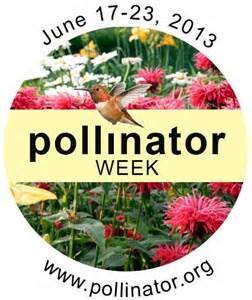 This is a week to appreciate and celebrate our pollinators. In my yard there are many baby monarch caterpillars eating on milkweed, and eggs of the painted lady butterfly on pearly everlasting and pussy toes. A dragon fly has been following me around as I work, and the hummingbirds stop to check things out. It is a beautiful exciting time! Get outside and enjoy.
This is a week to appreciate and celebrate our pollinators. In my yard there are many baby monarch caterpillars eating on milkweed, and eggs of the painted lady butterfly on pearly everlasting and pussy toes. A dragon fly has been following me around as I work, and the hummingbirds stop to check things out. It is a beautiful exciting time! Get outside and enjoy.

Our insects and pollinators have been in serious decline the past few years. This is a week is to heighten our awareness of pollinators. Make an effort to spot some butterflies, bees, dragon flies, or maybe a hummingbird.

Unfortunately, we have become a mono-culture world of asphalt, concrete, turf grass and hostas. Maybe you live in corn and soy bean country, more mono-cultures. Most of us can make changes to our environment to help pollinators. Maybe just place a pot of flowers on your deck, something that bees and butterflies like, or maybe replace a hosta with a wild geranium or native violets, maybe stop using chemicals on your lawn and turn it into a clover yard, or plant some bee balm, milkweed, coneflowers or sunflowers.
A new extensive UN study says we are on track to loose over a million spieces in the next few decades. Pesticides are a problem for bees and insects, but the study says the lack of plant diversity is also a big problem. Our farmers plant too much corn and soybeans, and yards have too much turf grass and too many hostas!
Each one of us can make a difference, think diversity in your yard! How can you brighten your yard and make it more attractive to pollinators?
Find ideas from the Xerces Society or native plants from Audubon for your area here.
The urban and rural gardener all have an important part to play in the health of our pollinators. Diversity is important. Keep it simple to start, native plants are easy to grow, but don’t forget native trees, especially oaks, are excellent at adding diversity. Last, but most important, purchase plants from serious nurseries, and ask to make sure plants haven’t been treated with neonicotinoids.
“Nature needs to be appreciated for itself and viewed as natures health dictates our human health. Without healthy water, land and soil and wildlife we will not survive as human beings. We must set aside of land, and water bodies and protect them from development. We must be aggressive protecting our land water and wildlife.” Ecowatch, read more here.









